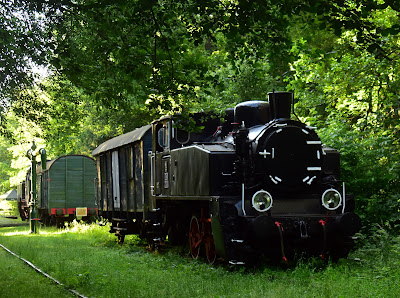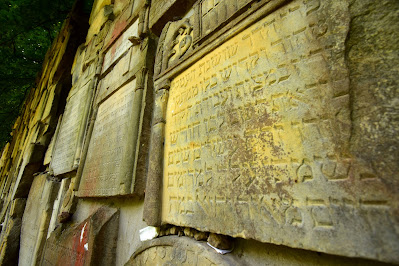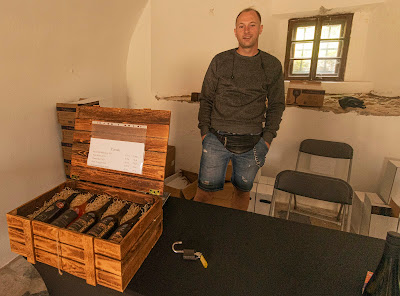Yesterday saw the introduction of minor timetable changes to Poland's railway timetables. This has an impact on sleeper-train services for the summer holidays. Since the major December change, it's just been adjustments of departure and arrival times, but notably one entirely new service has been added, so we're back to six (plus the international Chopin service which departs from Warsaw Central at 19:52 for Vienna, Munich, Prague and Budapest after splitting up in Kraków).

Excluding the Chopin, we have two pairs start/finish in Warsaw (to/from Świnoujście and Jelenia Góra); two pass through Warsaw (Gdynia to/from Zakopane and Kraków to/from Kołobrzeg), and two that bypass Warsaw altogether (Przemyśl to/from Świnoujście via Wrocław, and Prague to/from Gdynia via Wrocław). Last year, two of the six trains were operated by InterCity with new sleeper carriages, the remaining four were TLK (Twoje Linie Kolejowe, the cheaper brand). This year, two of the TLK services were upgraded to IC; one TLK remains, one has been changed from a sleeper service to an ordinary train that travels by night.
Let's look at the five pairs of domestic sleeper trains in detail with summer 2025 times. I'll start with my personal favourite that I've used many times over the years.
IC 18171 Uznam Warszawa Wschodnia - Świnoujście (dep. 22:27 arr. 07:17). An InterCity, rather than a TLK service, with the newer sleeper carriages. It leaves Warsaw later than in the winter timetable, calling at Szczecin Główny on the way, arriving at 05:28. The Uznam gets you to the western Baltic beach resorts in good time – it passes through Międzyzdroje at 07:03. And it runs all year round.
IC 81170 Uznam: Świnoujście – Warszawa Wschodnia (dep. 22:04 arr. 07:01) is the return service. Leaving a minute later than in the previous timetable, and arriving ten minutes earlier in Warsaw. The train is already in the platform well ahead of departure time, so passengers can board early and get themselves comfortable before it sets off. The sun sets over Świnoujście at 21:38 on Midsummer's Day, so you'd be hard pressed to get from the beach to the station after seeing it!
Taking the Uznam there and back from Warsaw in summer gives you the best part of 12 hours on the beach. With a hotel or apartment from Saturday to Sunday, you can get a full weekend of Baltic sun-and-sea having worked Friday, and be back to the office first thing Monday morning.
********
Here's another train that I've used many a time.
IC 16170 Karkonosze: Warszawa Wschodnia – Jelenia Góra (dep. 23:24 arr. 06:39). The Karkonosze, only goes as far as Jelenia Góra in summer (in winter it continues to the mountain resort of Szklarska Poręba), calling in at Wrocław Główny (04:15) and Wałbrzych Główny (05:53) along the way. Upgraded to an Intercity (IC) train in December. If you have an early business meeting in Wrocław, my tip is to sleep on to Wałbrzych, change there to take a local train back, which will give you another couple of hours of rest. Otherwise you'll be spending all that time in Wrocław Głowny's McDonalds until your meeting.
IC 61170 Karkonosze: Jelenia Góra – Warszawa Wschodnia (dep. 21:30 arr. 04:56). A useful sleeper connection from Wrocław (passing through at 23:20). Having travelled by night from Wrocław to Warsaw on a multiple-unit Dart train, seated in a normal seat in a normal carriage, I can say – never again. Pay the extra and travel lying down. So much better for the spine.
It's sad that the Karkonosze only runs between Warsaw and Zielona Góra during the summer months, depriving summer mountain-hikers the chance to get there by night train in summer.
********
IC 38170 Ustronie: Kraków Główny – Kołobrzeg (dep. 21:47 arr. 10:53). Year-round seaside-special for folks from Poland's south, calling at Kielce, Radom, Warsaw East and the Tri-City on its way to the resorts of Ustronie and Kołobrzeg. You can use this train as a nocturnal connection between Warsaw Central (dep. 01:57) and Gdańsk (arr. 06:01) and Gdynia, though with four hours between the two cities, you'll not get quality sleep time. Upgraded last year from a TLK to an IC, so better rolling stock. Also, it visits Warka (01:10) and Piaseczno (01:30), Warsaw West and Warsaw East on the way. One of Poland's longer night-train routes, at 887 km.
IC 83171 Ustronie: Kołobrzeg – Kraków Główny (dep. 19:29, arr. 08:25). Passing through Warszawa Centralna at 03:45. The train is a useful nocturnal connection for Varsovians needing to be in Kraków for early business meetings. Departs Warka at 04:34 in time for breakfast in Kraków.
********
TLK 35170 Karpaty: Zakopane – Gdynia Główna (dep. 21:40, arr. 08:12) From the mountains to the sea, 848 km. The last of the TLK sleepers; not upgraded to IC status. Fans of old-school rolling stock can still experience the veneered wood, moquette upholstery and clunkiness. The Karpaty also functions as another nocturnal connection between Kraków, Warsaw and the Tri-City (dep: Kraków Główny 00:45, calling at Warsaw Central at 04:23 and arriving in Gdańsk Główny at 07:45). The Karpaty takes the Częstochowa-Piotrków Tryb. route rather than serving Kielce and Radom.
TLK 53170 Karpaty: Gdynia Główna – Zakopane (dep: 19:56, arr: 06:38) On the way back from Gdynia to Zakopane, the Karpaty leaves Gdynia at quite an early hour for a sleeper service, passing through Warsaw Central at 23:35 and arriving in Kraków at 03:26. This means Krakovians can get home after a late night in the capital. The Polish mountains are connected to the Polish sea by night train again – but unlike the Szklarska Poręba service, this one runs all year round.
********
Now the sleeper services that skips Warsaw altogether. This is the IC 83172 Przemyślanin: Świnoujście – Przemyśl Główny (dep. 19:07, arr. 08:39). The Orient-Express of Polish train journeys, a full 1,019 kilometres (612 miles) all the way, linking the south-east and north-west extremes of Poland. Thirteen hours and 22 minutes. A mid-evening start from Świnoujście, but there's a gastronomic wagon (restaurant car) attached. Given the nature of night trains, moving from your compartment to the restaurant means having to arrange this with the sleeping-car attendant. The carriages are delivered to Świnoujście station an hour or so before the departure time, so you can leave your stuff in your sleeping compartment, and dine en route to Szczecin Główny (20:31) before returning to your bunk(s). The train also calls at Poznań, Wrocław, Opole, Kraków and Rzeszów on the way, thus serving six of Poland's 16 provincial capitals. A proper InterCity train with modern sleeper carriages, superior in comfort to the stock used on TLK night connections.
IC 38172 Przemyślanin: Przemyśl Główny-Świnoujście (dep. 19:20, arr. 09:01). The south-east and north-western extremes of Poland linked the other way.
***********
Finally, there's one extra night train/sleeper service that's been introduced in April – the EC460/IC460 Baltic Express, which runs from Prague (Praha hlavní nádraží) to Gdynia Główna via Wrocław, Poznań and Gdańsk. The service departs Prague at 18:51 as the EC460, arriving at Wrocław Główny at 22:47, Poznań Główny at 01:23, and Gdańsk Główny at 04:51. Once over the border into Poland, the train's designation changes to IC469.
Running back to Prague, the IC461/EC461 Baltic Express leaves Gdynia Główna at 23:16, passing through Gdańsk at 23:40, calling at Poznań at 02:49, Wrocław at 04:24, crossing the border to arrive in the Czech capital at 09:06 as the EC461 (the train's designation changes at the border).
The EC/IC460 and IC/EC461 Baltic Express services have sleeper carriages all the way and a restaurant car is attached between Wrocław and Gdynia. The trains are composed of a mix of České dráhy and PKP rolling stock. Apart from this pair of night trains, there are three more pairs of Baltic Express services linking Prague and Gdynia that travel through the day.
Make the most of this, the most ecologically friendly form of travel. Go to bed in one city, wake up in another – result!
This time last year:
It's my money and I'm not intending to spend it
This time three years ago:
As I walked out one midsummer's morning
This time ten years ago:
Central Warsaw rail update
This time 13 years ago:











































